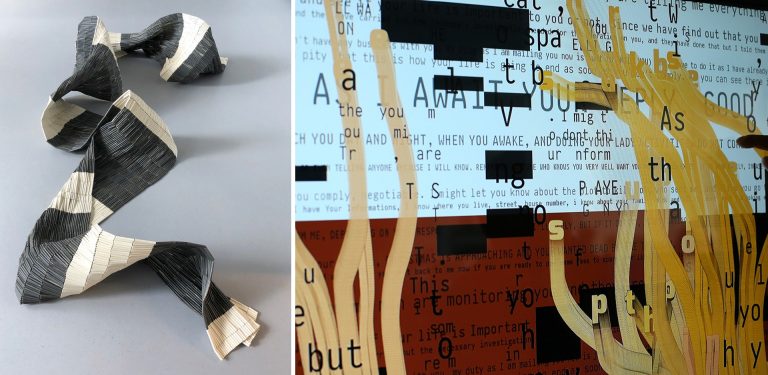Concordians make significant contributions to the Biennial Contemporary Native Arts Exhibition

While countless cultural events have been cancelled due to COVID-19 crisis, the Contemporary Native Art Biennial (La Biennale d’art contemporain autochtone, or BACA) launched in April, on schedule — though visits are happening a little differently.
On April 23, BACA hosted an online, virtual opening of the multi-gallery exhibition, much of which is viewable until June 21.
Every two years, the biennial is overseen by a different curatorial team that explores a new theme. The 2020 edition is hosting works by roughly 50 artists engaging with the topic of honouring kinship.
Kahwatsiretátie: Teionkwariwaienna Tekariwaiennawahkòntie, Honouring Kinship
Curator David Garneau describes the way in which the term “Indian” was wielded by colonizers in order to reduce Indigenous North American populations to a homogenous group.
At the same time, this year’s theme invites reflection on how colonial history has served as an impetus for many of these diverse Indigenous communities to come together.
Many Concordia faculty, students and alumni have contributed to the biennial. Co-curator Faye Mullen works at the Aboriginal Student Resource Centre, and Rudi Aker, also a co-curator, is pursuing a BFA at the university.
In reflecting on the theme of kinship, they emphasize the “spiderweb-like” structures and relations through which persons and entities are formed and from which they grow.
The term “Aboriginal” — in some ways intended to refer to all non-colonial peoples — should not be thought to stand for a homogeneous identity, they suggest. The term signifies an alliance and mutual engagement between multiple nations.
Working together, diverse and disparate peoples can stand in solidarity against colonialism and the colonial values that continue to prevail in dominant Western culture.
Concordia contributions
Some of the many artist contributions from Concordia include those of Nadia Myre (MFA 02), assistant professor of studio arts and Canada Research Chair in Indigenous Arts Practice, and Jason Edward Lewis, professor of design and computation arts, and Concordia University Research Chair in Computational Media and the Indigenous Future Imaginary.
Also contributing are graduates Skawennati (BFA 92, GrDip 96) and Hannah Claus (MFA 04), as well as MFA students Scott Benesiinaabandan, Renée Condo, and Concordia Humanities PhD candidate Diane Roberts.
Myre discusses the Kìnawind Lab she has been building within Concordia’s Department of Studio Arts. Complementing the theme of the biennial, the lab explores identities and relations. “Identities are fed through meetings and connections,” she says.
The exploration of interconnections was both a theme of the biennial and an important practical element of its organization and development. In order to bring others into the discussion, curators invited participating artists to reach out to people in their own networks who would also want to contribute.
“When David came to Montreal, I invited students and anyone involved with Kìnawind Lab to show him their work,” Myre says.
“We didn’t focus so much on the relative and hierarchical status of artists. We didn’t privilege faculty over students, for example. In general, we try to give everyone the opportunity to pursue what’s important to them, which they can then relate back to the work of others at the lab.”
This meeting helped further the network of artists who eventually contributed to the biennial. “We try especially to think about how we can be together — as Indigenous and non-Indigenous people,” Myre says.
“The lab’s name is derived from a hybridized spelling of the Anishinaabemowin personal pronoun Giinawind. A first-person inclusive plural, KÌɅA8IɅ (in Algonquin), refers to the notion of an inclusive ‘us’; a grouping of oneself with one’s own group or community as well as with those outside of it, and so the work we do questions what our connection is to each other in this moment,” she explains.
“In my own work, I try to bring complicated histories to light to see how they resonate in the present.”
The galleries hosting the 2020 Contemporary Indigenous Art Biennial will open for in-person visits in the coming weeks if and when physical-distancing measures are adjusted.
Find out more about Concordia’s Faculty of Fine Arts.


